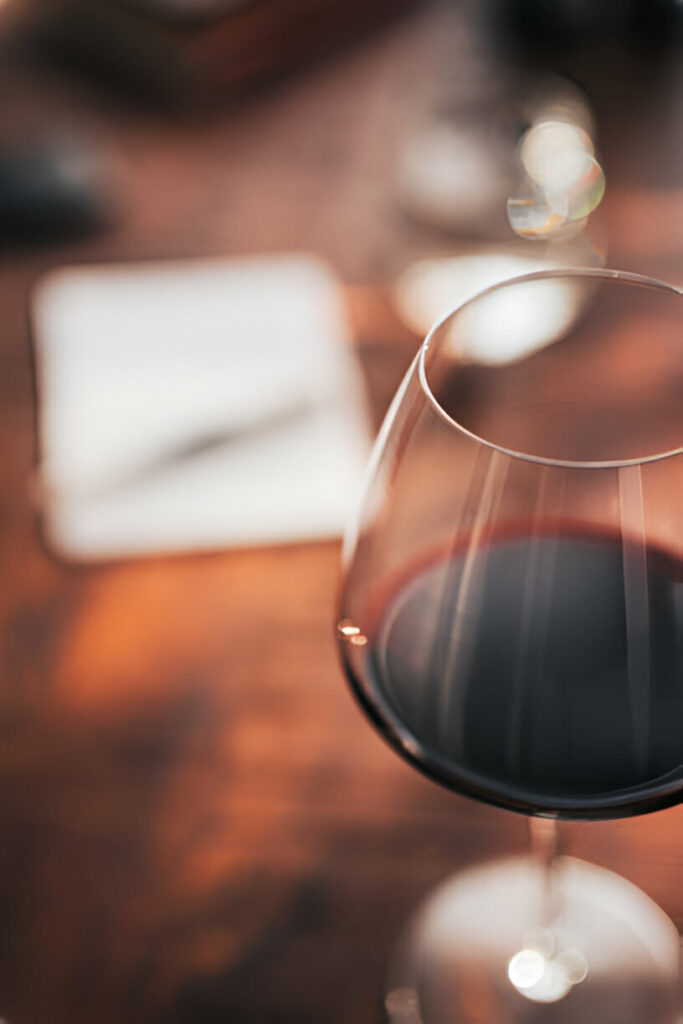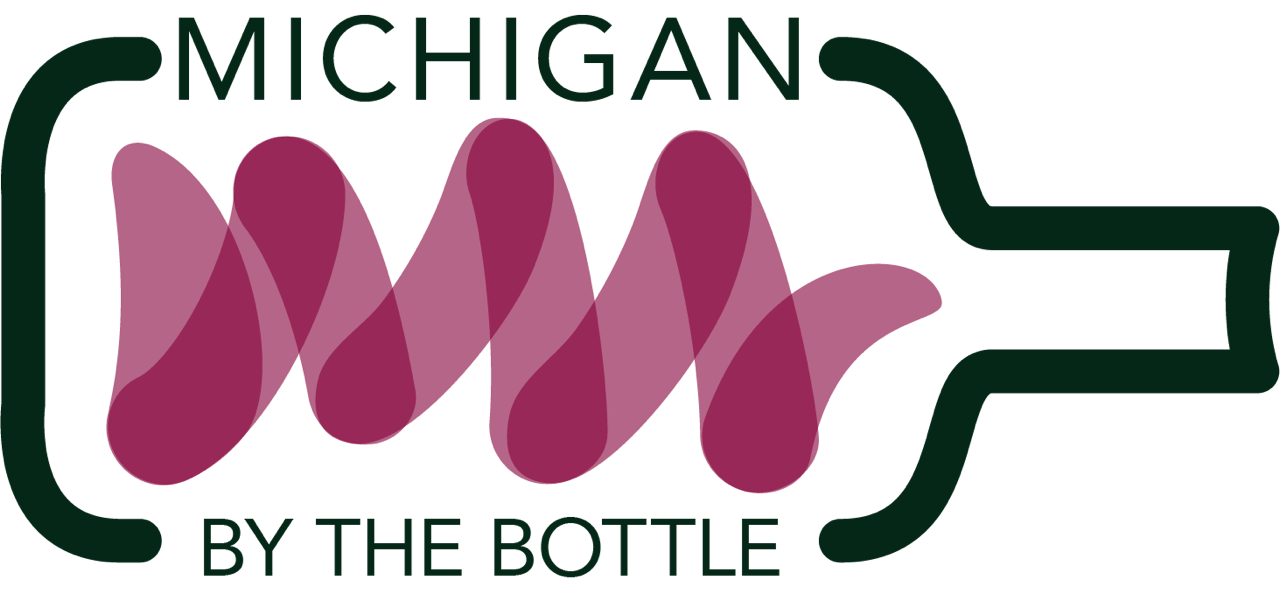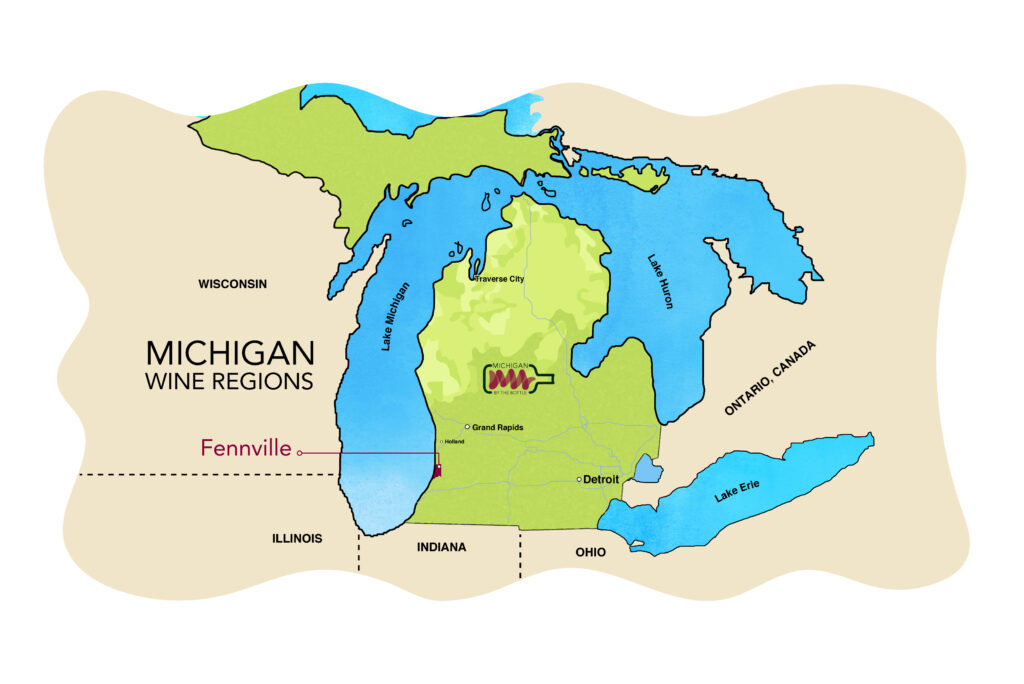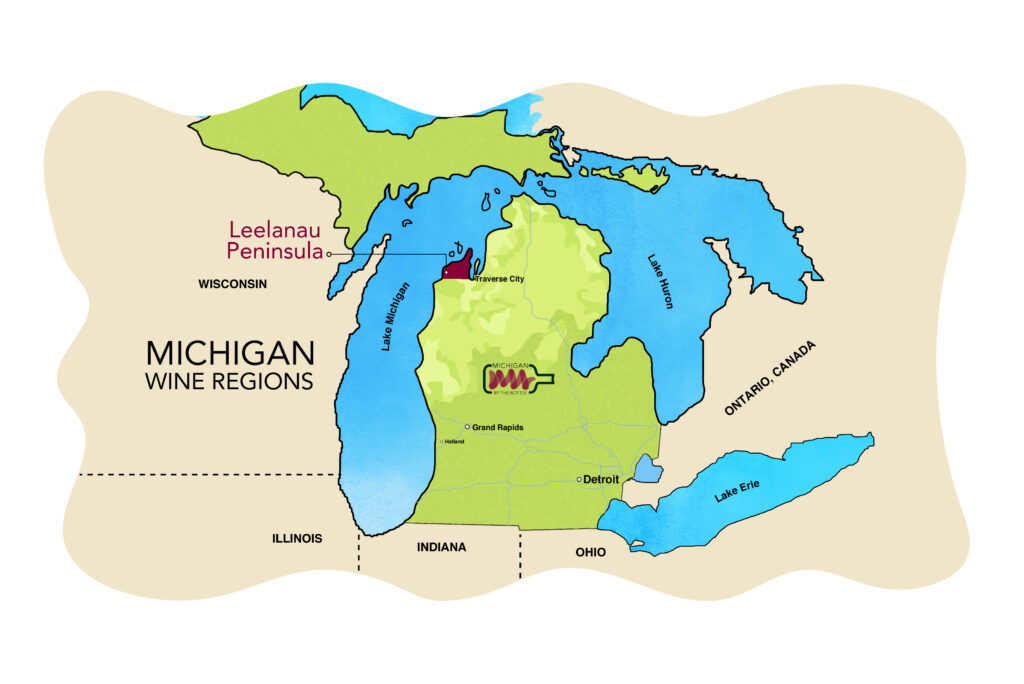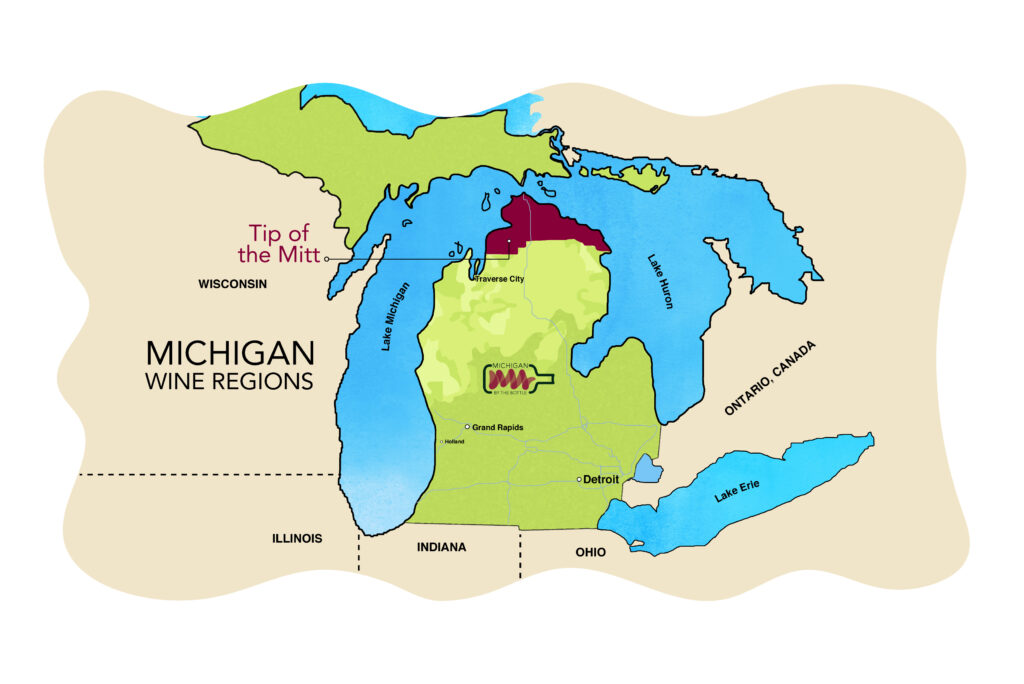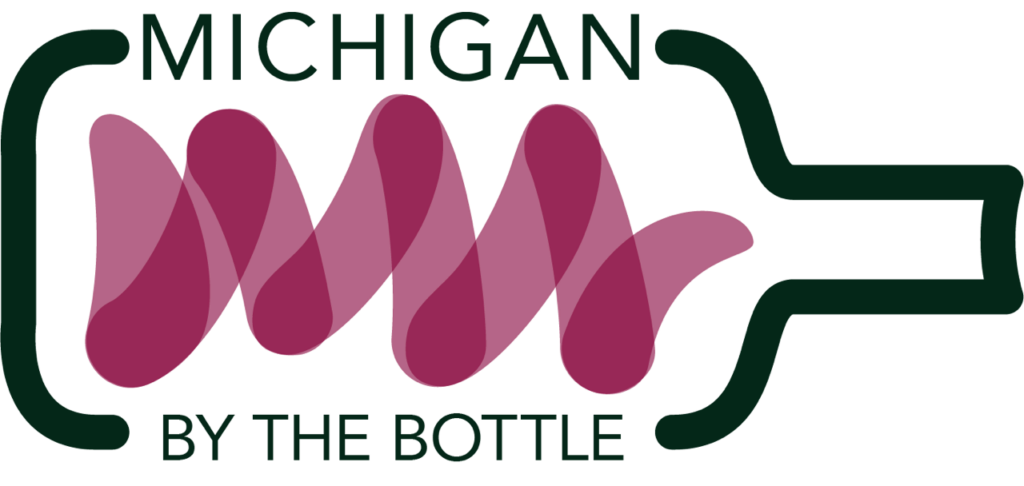Michigan AVAS
What Is An AVA and Why Is It Important?
AVA, or American Viticultural Area, is a term you’ll hear often here. It’s the official designation for wine grape-growing regions in the U.S., put in place by the TTB. Think of each AVA as a unique ecosystem, defined by its climate, soil, and elevation, making every bottle a special experience. While European regions enforce strict rules, AVAs tell you where the grapes are grown. If a bottle sports an AVA label, rest assured 85% of its grapes hail from that region.
At Michigan By The Bottle, we’re all about showcasing wines with authentic labels displaying their AVA. This guarantees you’re sipping on at least 85% Michigan-grown goodness. And often, our boutique picks are the real 100% homegrown deal! Cheers to that!
Map of Michigan with all of the AVAs and year they were formed

Lake Michigan Shore AVA - 1983
Lake Michigan Shore is a haven for red grape varieties and overall accounts for almost half of all the vineyard area in Michigan. It’s also renowned for its viticultural history, dating back to 1867.
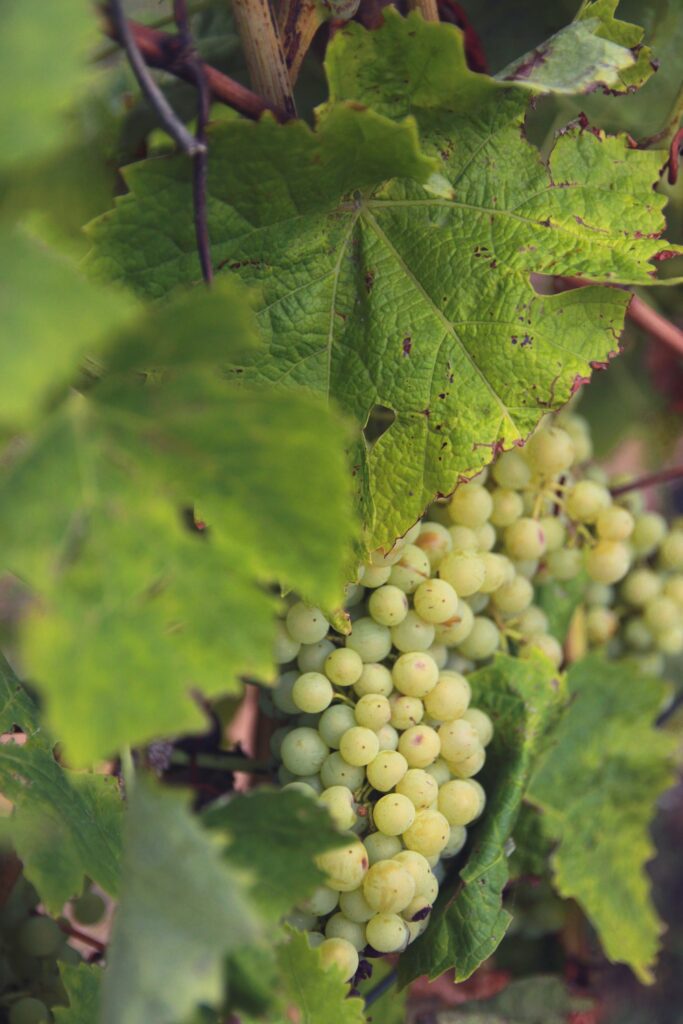
Where do wine grapes grow in Michigan?
Most of our charming vineyards are in the western and northern sections of the Lower Peninsula, where Lake Michigan’s gentle influence creates a grape-growing paradise. Let’s explore the highlights:
Lake Michigan Shore AVA & Fennville AVA (Southwest Michigan)
- This is Michigan’s wine giant, responsible for nearly 50% of Michigan’s vineyards.
- Nestled close to the Indiana border, feel the “lake effect” magic as it stretches the growing season and shields the vines from harsh weather.
- Savor flavors of Cabernet Franc, Merlot, Chardonnay, and unique hybrids like Vidal Blanc, Catawba, and Cayuga.
Leelanau Peninsula & Old Mission Peninsula AVAs (Northwest Michigan)
- The Traverse Wine Coast is home to the state’s second-largest vineyard concentration but has the largest plantings of vinifera vineyards in the state.
- These regions are cool-climate dynamos, showcasing Riesling, Chardonnay, Pinot Noir, and Pinot Grigio, and Cabernet Franc.
- Thanks to Lake Michigan and the Grand Traverse Bay, vineyards experience extended ripening and wines retain bright, fresh acidity.
Tip of the Mitt AVA (Northern Lower Peninsula)
- Our newest and most northern AVA is a rising star with its vineyard count growing.
- Dive into cold-hardy hybrids like Marquette, La Crescent, and Frontenac.
- Enjoy the warming lake effect from both Lake Michigan and Lake Huron.
Michigan Wine Facts
Become a Michigan trivia master at the next trivia night by learning these insightful Michigan wine facts.
🍷 Unique Climate & Terroir
The “Lake Effect” Magic 🌊 – The Great Lakes (especially Lake Michigan) help moderate temperatures, making Michigan one of the best cool-climate wine regions in the U.S. This allows grapes to ripen slowly, enhancing flavor complexity.
Same Latitude as Famous Wine Regions 📍 – Michigan’s wine regions share the same latitude as Bordeaux, France, meaning they have similar growing conditions for wines like Cabernet Franc and Merlot.
🍇 Distinctive & Award-Winning Wines
Riesling Royalty 👑 – Michigan is known as one of the best Riesling-producing states in the U.S., producing dry, off-dry, and sweet varieties that win national and international awards.
Ice Wine Wonderland ❄️ – Michigan is one of the few U.S. states that produces authentic ice wine, made from grapes naturally frozen on the vine. This process results in incredibly rich, sweet dessert wines.
🏆 Growing & Thriving Industry
Over 150 Wineries & Counting 🍾 – Michigan is home to over 150 wineries, and the number keeps growing!
5 Official Wine Regions (AVAs) 🗺️ – Michigan has five federally recognized American Viticultural Areas (AVAs), each with unique soils and climate influences:
Leelanau Peninsula
Old Mission Peninsula
Lake Michigan Shore
Fennville
Tip of the Mitt
🌱 Sustainability & Local Support
Eco-Friendly Practices 🌿 – Many Michigan wineries focus on sustainable farming, organic methods, and natural winemaking techniques.
Supporting Local Agriculture 🚜 – The Michigan wine industry has over 3,300 acres of vineyards, supporting local farmers and preserving green spaces.
🍷 Perfect Pairings & Experiences (Food Wines)
Perfect Pairings with Michigan Foods 🧀 – Michigan wines pair beautifully with fresh Great Lakes fish, local cheeses, and famous Michigan cherries.
Wine Trails & Scenic Views 🌄 – Michigan has some of the most beautiful winery settings in the U.S., with rolling vineyards, lakefront tasting rooms, and stunning sunsets over the water. The Traverse City Wine Coast is especially famous for its breathtaking views!
